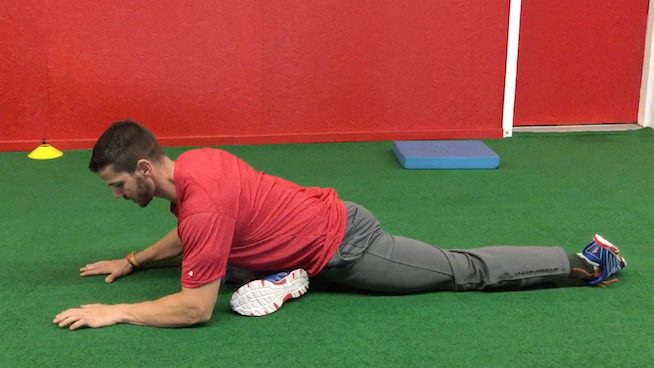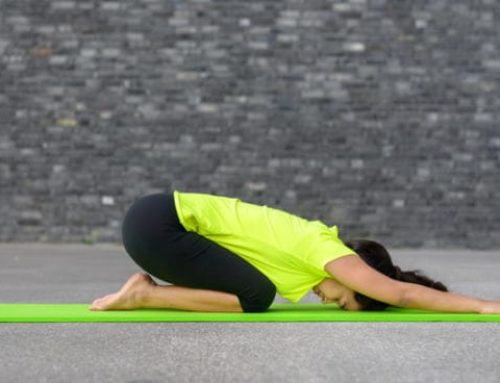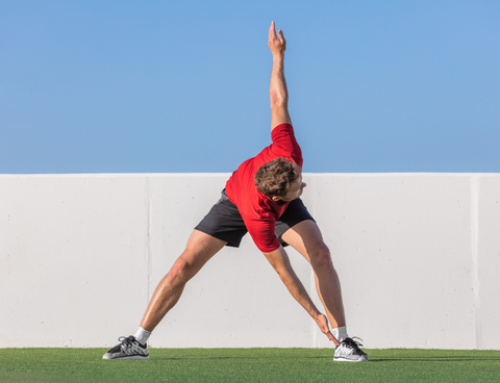How Long to Hold a Stretch to Improve Flexibility
Stretching arguably is one of the most butchered aspects of training. Unless you have a strength coach or you’re a gym rat, there’s a good chance you do a few bent-over hamstring and cross-body shoulder stretches for a few seconds and call it a job well done.
Unfortunately, haphazard stretching routines like this aren’t doing you much good.
It’s essential that you first identify the goal of your stretching routine. Are you preparing your body for a workout or other activity? Then stick to a dynamic warm-up that features bodyweight exercises like Reverse Lunges and Squats to warm up your body, increase range of motion and activate muscles.
This article by Boston-based strength coach Tony Gentilcore sums up exactly what a dynamic warm-up should look like.
If you’re looking to improve flexibility, static stretching—the style of stretching where you hold a stretched muscle for an extended duration—should be your go-to style of stretching.
But how long do you actually need to hold a stretch to increase flexibility?
According to Dr. Matt Stevens, a physical therapist and owner of Pure Physio (Strongsville, Ohio), it’s best to hold a stretch for one to two minutes to increase flexibility. However, even stretches for 20-30 seconds appear effective.
Here are a few key guidelines for effectively using static stretches:
Avoid long duration stretches before a workout or game
Research has shown that holding a stretch for 20 seconds is effective without impairing strength. However, avoid stretching for longer than this before a workout. “If we have athletes stretch excessively before they go out and train, we’re often destabilizing the joint. So I don’t want to do a lot of prolonged stretching before I do an activity.”
Also, make sure to avoid PNF stretching, a type of stretching where you alternate between a stretch and muscle contraction.
That said, Stevens explains that you can spend extra time stretching an especially tight area that might affect your exercise form or sports skills. For example, if you have tight ankles and plan to squat, it’s best to make sure that your ankles are fully mobilized before a workout to improve your Squat form.
Avoid intense stretch routines 24 hours before a big game
It’s been shown that an intense static stretch routine of 15 minutes performed 24 hours before activity is actually worse than doing nothing at all, however this is likely a bit extreme and you probably won’t even notice a difference.
If you have a big game or race, then you might want to avoid an intense static stretch routine the day before. Otherwise, it shouldn’t cause much of a problem.
Stretches will be uncomfortable but shouldn’t be painful
Some static stretches are more uncomfortable than others. The Frog Stretch is one that comes to mind that’s particularly uncomfortable. That said, a stretch should never be painful. If you experience pain, then back off the stretch until you find an appropriate intensity.
Remember to breathe!
Take deep breaths as you hold a static stretch. During exhales, try to slightly increase the level of stretch. As you exhale, your nervous system relaxes and allows for a greater stretch. “What we’re doing—why I’m a big fan of yoga—is working into those positions and breathing and calming the nervous system down and telling it it’s OK,” adds Stevens.
READ MORE:
- The Ultimate Guide to Foam Rolling
- 10 Athletes and Teams Who Practice Yoga
- Flexibility Isn’t the Problem With Your Hamstrings
RECOMMENDED FOR YOU
MOST POPULAR
How Long to Hold a Stretch to Improve Flexibility
Stretching arguably is one of the most butchered aspects of training. Unless you have a strength coach or you’re a gym rat, there’s a good chance you do a few bent-over hamstring and cross-body shoulder stretches for a few seconds and call it a job well done.
Unfortunately, haphazard stretching routines like this aren’t doing you much good.
It’s essential that you first identify the goal of your stretching routine. Are you preparing your body for a workout or other activity? Then stick to a dynamic warm-up that features bodyweight exercises like Reverse Lunges and Squats to warm up your body, increase range of motion and activate muscles.
This article by Boston-based strength coach Tony Gentilcore sums up exactly what a dynamic warm-up should look like.
If you’re looking to improve flexibility, static stretching—the style of stretching where you hold a stretched muscle for an extended duration—should be your go-to style of stretching.
But how long do you actually need to hold a stretch to increase flexibility?
According to Dr. Matt Stevens, a physical therapist and owner of Pure Physio (Strongsville, Ohio), it’s best to hold a stretch for one to two minutes to increase flexibility. However, even stretches for 20-30 seconds appear effective.
Here are a few key guidelines for effectively using static stretches:
Avoid long duration stretches before a workout or game
Research has shown that holding a stretch for 20 seconds is effective without impairing strength. However, avoid stretching for longer than this before a workout. “If we have athletes stretch excessively before they go out and train, we’re often destabilizing the joint. So I don’t want to do a lot of prolonged stretching before I do an activity.”
Also, make sure to avoid PNF stretching, a type of stretching where you alternate between a stretch and muscle contraction.
That said, Stevens explains that you can spend extra time stretching an especially tight area that might affect your exercise form or sports skills. For example, if you have tight ankles and plan to squat, it’s best to make sure that your ankles are fully mobilized before a workout to improve your Squat form.
Avoid intense stretch routines 24 hours before a big game
It’s been shown that an intense static stretch routine of 15 minutes performed 24 hours before activity is actually worse than doing nothing at all, however this is likely a bit extreme and you probably won’t even notice a difference.
If you have a big game or race, then you might want to avoid an intense static stretch routine the day before. Otherwise, it shouldn’t cause much of a problem.
Stretches will be uncomfortable but shouldn’t be painful
Some static stretches are more uncomfortable than others. The Frog Stretch is one that comes to mind that’s particularly uncomfortable. That said, a stretch should never be painful. If you experience pain, then back off the stretch until you find an appropriate intensity.
Remember to breathe!
Take deep breaths as you hold a static stretch. During exhales, try to slightly increase the level of stretch. As you exhale, your nervous system relaxes and allows for a greater stretch. “What we’re doing—why I’m a big fan of yoga—is working into those positions and breathing and calming the nervous system down and telling it it’s OK,” adds Stevens.
READ MORE:
- The Ultimate Guide to Foam Rolling
- 10 Athletes and Teams Who Practice Yoga
- Flexibility Isn’t the Problem With Your Hamstrings












